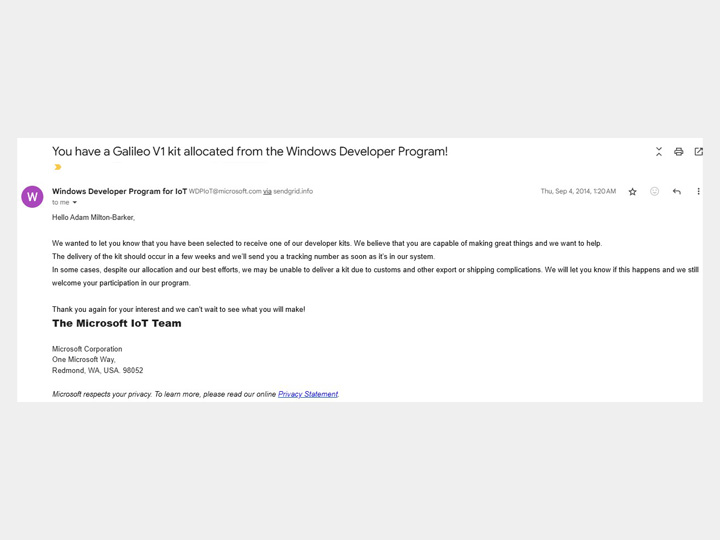My journey started as a web developer building websites to promote my DJing nights and events in Blackpool around 2003. Not long after I created and ran a forum focused on clubbing in the North West UK, which became quite popular with local promoters and DJs using it to promote their events.
Through these outlets I promoted a number of my events such a series of Battle of the DJs, Motorbike Mania, and various other dance events.
In 2004 I moved back to Spain where I was a promoter for one of the local clubs. Known at that time as "the Internet Boy" I began to repurpose the forum to become a bridge between UK and Spanish DJs, and not long after the forum became very popular in Benidorm, with the local club owners and DJs using it for promotion. I began to play a little bit in the clubs, and by 2005 I was DJing on the famous English Square in Benidorm, hosting numerous events that brought some of the North West UK's most known DJs to the clubs of Benidorm. I began to teach myself how to develop Flash based websites, and before long I had made most of the websites for the clubs on the Square, as well as acts and entertainers.
In 2008 I returned to the UK after a short time living in Sweden, and it was then that I took on my first professional web development job, responsible for creating brochure style websites for local and national businesses. I transitioned from Flash based websites to working with HTML and CSS, and not long after I began to teach myself how to program in PHP by reverse engineering Joomla which I had been using to build my own websites with.
In 2009 I registered as self-employed as a software developer, and became known for building Facebook game applications such as Keno, and a unique type of eCommerce website/app that could be accessed through the Facebook platform itself. Over the following 4 years, I built up my business and had clients in 7 countries. It was at this time I began to look into how I could develop a system that I could use to help automate my workload, and this is where the idea for what is now known as CogniTech CORE was born.
In 2013, after returning to Spain and spending a short time DJing, I decided to focus full-time on the technology and hang up the headphones. I joined Xpoze Media as the development manager where we serviced business in Spain and the UK, and also rebuilt the eCommerce Facebook app I had built a few years before.
In 2014 I began to develop Artificial Intelligence systems with the goals of building an automated assistant. This lead to a series of system built with C++ and AIML (Artificial Intelligence Markup Language) which I lauched under the project name oIsCore (Online Intelligent Systems Core).
My work began to become quite popular on Google+, and before long I had close to half a million views.
In 2014 I was introduced to a local newspaper through Xpoze, who invited me to write a weekly editorial about technology. I had dedicated a lot of time to helping people learn about modern technologies, and I jumped at the offer to begin my own editorial, with this TechBubble was born, which would become the next iteration of the platform, integrating the original platform I had begun developing in 2009 with the AI capabilities of oIsCore.
During this time I had become a beta tester for the Micro 3D Printer, which started my journey in the world of 3D printing. I was extremely active as a beta tester, and my projects gained a lot of support from M3D, and they later sponsored some of my projects with some cool 3D printed robotics pieces and a BCI helmet for the OpenBCI kit I had. As of 2024, my name is still referenced on their Wiki page.
I began to read a lot about the Internet of Things, and instantly fell in love. This was the missing piece to the platform, connectivity from my online and AI systems to the physical world. I submitted my project idea to the Microsoft Windows Developer Program for IoT, and was extremely excited when Microsoft chose the projects as one of their favorite projects and provided me with an unreleased version of the Intel Galileo that came with the Windows IoT operating installed on it. This was the first time I had received recognition from a major player like Microsoft, and it really encouraged me to continue the work on my projects.
In 2015 I had dedicated a lot of my time to furthering my understanding of AI and computer science, and enrolled in a number of online courses including HarvardX CS50x, and MITx 6.00.1x and 6.00.2x. My end of course project for HardvardX CS50x was well received and I was given permission for it to become an extension of the official support website for the course, CS50xHelpers. I worked closely with the course mentor and Harvard teaching fellow Luigi Morelli to get the full site ready, but due to my schedule over the following months I was unable to dedicate the time to the project.
The MITx courses were my first real deep-dive into computer science. At the time I joined 6.00.1x MIT were looking for students to assist course tutors by becoming CTAs (Community Teaching Assistants). I decided I would really like to give it a shot and was honored to have my request approved. For the duration of the course I assisted tutors and students, running the official Facebook group and providing support, at the same time I was completing the course myself. I had such an amazing experience during this time, and it was something that I will forever be proud of. I was invited back to be a CTA for MITx 6.00.2x which again was a great honor.
In late 2015 I submitted a project idea to the IBM Global Mobile Innovators Tournament and received notification in early 2016 that I had been selected as a semi-finalist. My project was 1 of 5 entries from around the world for my category selected to go through to the semi-finals.
I presented the project in Amsterdam for the semi-final finals but unfortunately did not make it through the finals. IBM invited me as a guest to go to the finals in Barcelona at 4FYN @ Mobile World Congress which was my first time visiting Barcelona.
Around the same time I also entered the Hackster/Arduino/Microsoft World Maker Challenge and my project was selected as one of the first phase winners. I was one of 1000 people around the world that got first access to the then new Arduino Mkr1000. It was the first big project I had done that integrated AI, IoT, and the microchip I implanted into my hand into one project with a Microsoft Windows application.
My journey into the world of hackathons began at the Intel/Microsoft IoT Solutions World Congress Hackathon in Barcelona, Spain in 2016. This event was a defining experience that opened the door for me to join the Intel Software Innovators Program, connecting me with a community passionate about innovation and technology.
At the Barcelona hackathon, my team and I developed a computer vision project aimed at monitoring dependent family members through facial recognition. Our project combined a deep learning neural network on an Intel Joule with a smart home setup powered by Intel technologies, such as the Intel NUC. This innovative approach earned us the prestigious Intel Experts Award.
In January 2017 I was contacted by the then EMEA manager of the Intel Software Innovator Program, Francesco Baldassarri, and invited to join the Intel Innovators Program. This was truly an honor as through my work on the Intel Gallileo provided to me by Microsoft in 2014 I had come across the Intel developer forums and I was really eager to become an Intel Software Innovator. Over the following years I was one of the most active Innovators, with Intel supporting a number of my projects with hardware and speakership opportunities, and I was fortunate enough to demostrate my AI and IoT projects at some of the largest technology events in the world on behalf of Intel, as well as assisting with mentoring students at hackathons and universities. I have received numerous certifications and awards from Intel over the years and it has been an extremely big part of my life.
In March 2017 I offered to take part in my first TEDx talk that would be hosted at the University of Melbourne. The TEDx was about the effect of Artificial Intelligence on our society in the future and it was an honor to be accepted to speak at the event. This was a nerve wracking event for me as I did not have alot of experience with public speaking and as someone who was completely self-taught with the exception to the courses I had taken, it was a big leap for me.
2017 was an extremely busy year. My first event with Intel was taking part as a mentor at the Intel IoT Solutions Hackathon in Furth, Germany in January 2017. In March 2017 I gave a remote session at the National Institute of Technology GOA on the Evolution of IoT through AI & Biohacking. In May 2017 Intel sponsored me to attend Collision Conference in New Orleans where I demostrated TASS and the AI eCommerce system as an Alpha Startup. Also in May I debuted the latest version of TASS at CodeMotion Amsterdam at Intel's section of the event. And finally in November 2017 I demonstrated TASS and the AI eCommerce at WebSummit in Lisbon as an Alpha Startup aswell as giving a talk at Intel IoT DevFest wrapping up my first year as an Intel Software Innovator.
In 2018 I accepted a job offer as an IoT Network Engineer for a company called BigFinite which lead to me relocating to Barcelona from Altea. BigFinite (Now known as Aizon), are a software company that provide AI powered software as a service solutions to the pharmaceutical industry. Although this move meant closing down my company, TechBubble Technologies, BigFinite were supportive of me remaining active in the Intel Software Innovators Program, and supported my projects giving me opportunities to demonstrate and present my projects to my colleagues. My role as an IoT Network Engineer involved developing and maintaining the company’s core IoT device software. I was required to implement software for IoT devices using modern IoT communication protocols such as MQTT, HTTP, OPC UA, and OPC DA to retrieve data from remote locations and push it to the Bigfinite platform.
For personal reasons in 2018 I created a classifier that was capable of detecting Invasive Ductal Carcinoma. This project evolved from my previous work on computer vision. I found an open dataset for invasive ductal carcinoma histopathology images and modified my facial recognition project to work with this dataset. The outcome was good and I continued to work on the project, demonstrating it at Intel AI DevJam and speaking about it at the Intel booth at the 35th International Conference on Machine Learning in Sweden in 2018. You can find out more about the project in the video that Intel made about it.











